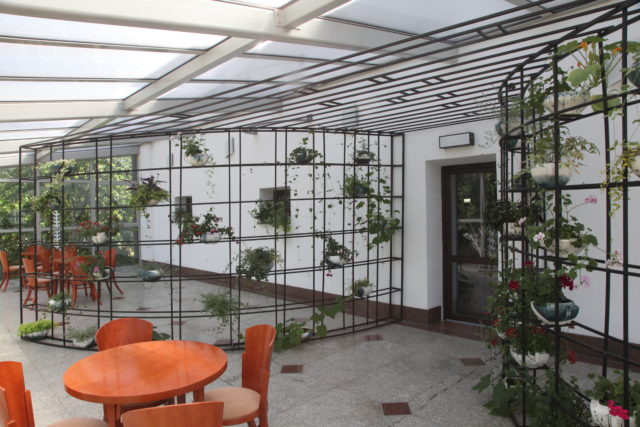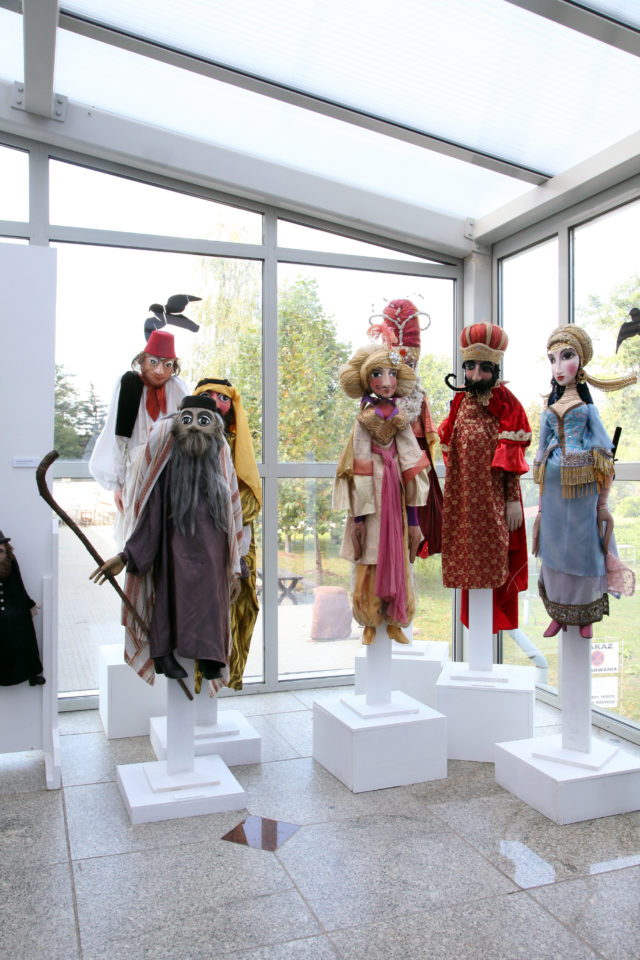Today opened until 18:00
Sunset at 19:26
°C
Today opened until 18:00
Sunset at 19:26
°C



Since medieval times the village of Orońsko together with its manor farm has belonged to the gentry families of the Starosielskis, the Szydłowieckis and the Odrowąż. The heyday of Orońsko started at the beginning of the 19th century, when the estate was purchased by an eminent civil engineer Franciszek Ksawery Christiani. After his death, the extension of the estate was continued by his widow Amelia Christiani and her daughter Mrs. Amelia Pruszak. In 1869, the debt-laden estate was bought by Helena Pruszak, who later married the renowned painter Józef Brandt. During the Great War, German soldiers looted the estate and the palace while Brandt and his family were relocated to Radom, where he died in 1915. After the war, Helena Brandt returned to Orońsko, while her son-in-law Aleksander Daszewski administered the manor farm. In 1934 Andrzej Daszewski, Brandt’s grandson purchased the estate. After the WWII the estate was nationalized. The manor house was turned into an elementary school, health centre and the administration of the State Fish Farm. Since 1965 Orońsko became the venue for sculptural open-air workshops and in 1981 the Centre of Polish Sculpture was established.
The Museum of Contemporary Sculpture was built in the years 1989–1992 according to the design of Wojciech Gęsiak, in a style referring to palace architecture. The building, situated on the Kaskada pond closes the communication and landscape axis of the Centre. Its interior performs exhibition, storing and office functions. The most important space in the whole edifice is the 675 m² main gallery hall where the key problem exhibitions are presented (Figure in the Polish Sculpture of the 19th and 20th Centuries, War in Man, On the Urgency to Create Visions) as well as individual exhibitions (Henry Moore, Tony Cragg, Magdalena Abakanowicz, Xawery Dunikowski). What gives the room its unique character is the brick walls, mighty x‑shaped pillars bearing coffer ceiling of reinforced concrete, and a floor made of wooden blocks.



Built after 1869 according to Alfred Schouppé’s design, the Orangery building originally played the role of a winter garden. It was seasonally used by Józef Brandt, his disciples and friends as a painting atelier. In the years 1986–1987 and 2008–2010 it was twice reconstructed according to the preserved documentation, and now serves as a unique exhibition space, with its unlimited access to daylight and the interpenetration of the gallery interior and exterior.



The chapel is the oldest historical architectural object situated in the compound of the Centre. The classicistic edifice, based on the architecture of Greek temples was erected in 1841 as manorial chapel. In the years 1957–1977 it served as parish church for Orońsko inhabitants. After it was desconsecrated in 1978, the chapel was re-purposed for the sake of exhibitions, and since 1987 it has been the Chapel Gallery. This gallery space presents small-scale artistic projects for which the original context of the place matters, with its climate of mysteriousness and solemnity. The Chapel usually houses individual shows of site-specific or commemorative character.



The coach-house was erected in 1905 in the western part of the manorial complex including former farm buildings. Besides vast rooms for coaches, it also housed a workshop, kitchen and household space. Now it contains a gallery presenting a permanent exhibition devoted to Magdalena Abakanowicz, one of the most outstanding Polish artists. What takes up the central part of the exhibition is Ukon from the series War Games which she donated to the institution. It is an extraordinary and one of the most interesting series made up of monumental objects created from tree trunks Abakanowicz found. The mighty branches, which had been the victims of roadside cuttings, were encased in steel rims or delicately wrapped in linen. Ukon was made between 1994 and 1995 in the Orońsko studios. The documentation of the stages of its creation was exhibited in the Coach-House with the use of light boxes. The work was placed on a steel, openwork base and its title brings to mind primitive languages and rituals which often inspired the artist. Ukon reminds of a war machine and makes us reflect about the oppressiveness of contemporary world. It is a testimony to the human aggression against nature.


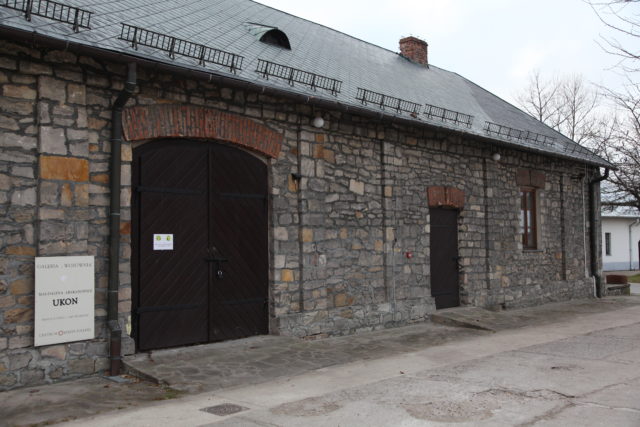
The Orońsko historical manorial park was arranged in the English style in the first half of the 19th century. The space of 12.3 hectares was landscaped, with consideration for the natural lie of the land. The trees were planted in a free arrangement, leading scenic axes and regular avenues. The tree-covered patches were contrasted with lightened meadows and lawns. Since the beginning, the park has been connected with art. Christiani brought the first sculptures here in the early 19th century. Out of them, 7 historical sculptures have survived till now. The Orońsko park can boast numerous and extraordinarily soaring white elm trees (Ulmus laevis), a species slowly becoming extinct in Europe. Thanks to the concentration of tall greenery, it is a sanctuary for birds and small animals. Currently the park serves as space for exhibiting works of Polish and foreign artists, the venue for workshops and symposiums. Around its area you can find over 100 works which constitute the permanent or temporary exhibition of hugely diverse stylistic, material and thematic character. From sculptures carved in stone using traditional techniques to minimalist installations from steel and concrete, sound or site-specific installations.
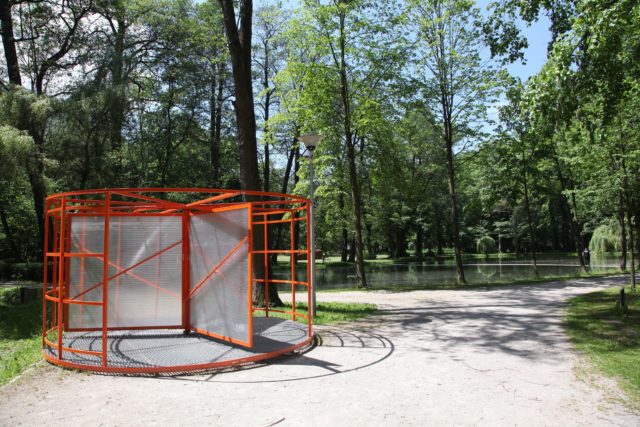
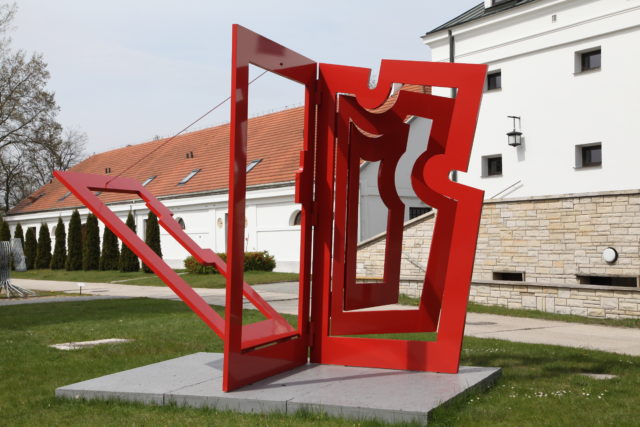
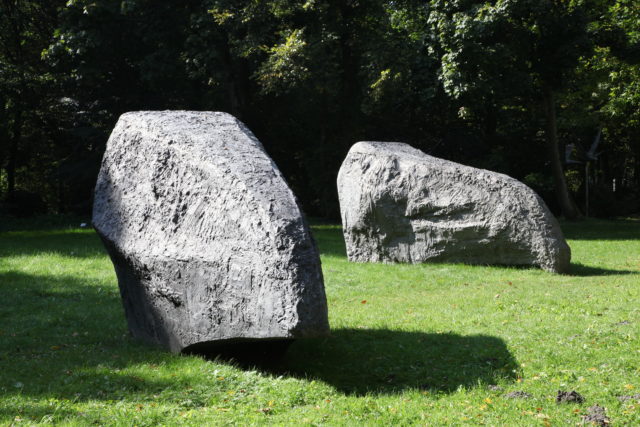
The 19th century palace has the neo-renaissance form of the so-called Italian villa, probably designed by architect Franciszek Maria Lanci. Initially it was a one-storey building but with time two towers were added to the eastern and western sides. The entrance is adorned with a cartouche of Christianis’ coat of arms ‘Jarosław’, and two allegorical female figures situated above. The cast-iron balcony of the east tower is supported by a pair of caryatids. Shallow niches in the elevation display busts of mythological figures. The palace en-suite rooms are arranged as a double-track. The corridor from the representative hall to the western part divides the interior into the northern and southern tract. Of the original furnishing and fittings only two fireplaces have survived – one of marble and the other of cast-iron. The interiors have been reconstructed and refer to the character of the epoch and the original purpose of the palace rooms. The visitors can see the hall, study, drawing room, boudoir and the dining room. The furniture, paintings, drawings, household objects are part of the Centre of Polish Sculpture collection, which was complemented with deposits of the National Museum in Warsaw and the Household Museum in Ziębice.
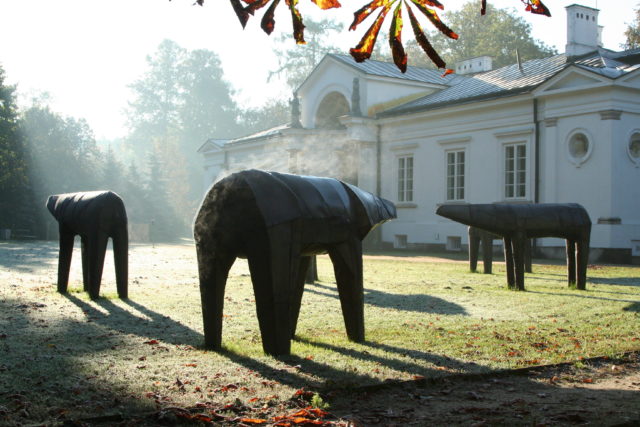
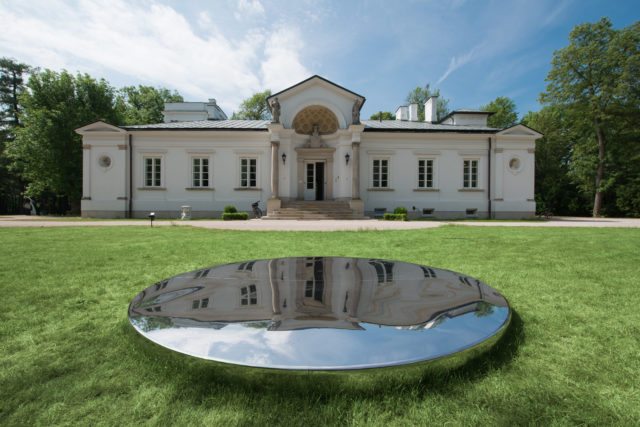
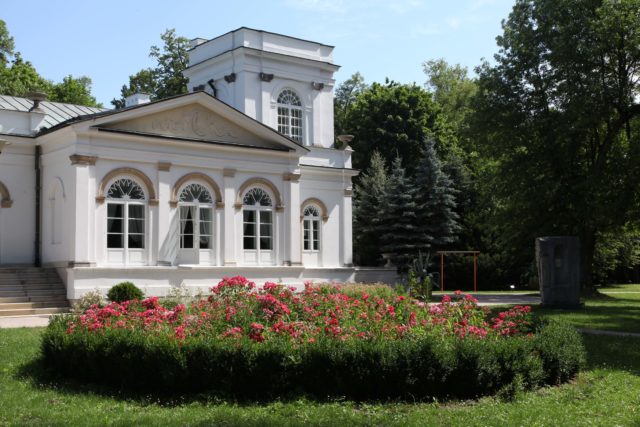
The mentions of the granary go back to the 1860s when Amelia Christiani together with her daughter Mrs. Amelia Pruszak erected a brick building in the place of a wooden storehouse. At present, thoroughly rebuilt, it performs the function of the Sculptor’s House. The adaptation design was made by Zbigniew Maleszewski, sculptor and architect. During the general alteration carried out from 1985 to 1987, the interiors were adjusted to serve hotel functions. In lieu of a former cellar in the northern part, an annex was added, and in 2008 an extensive terrace on its roof was transformed into a glazed pavilion which may serve as an additional exhibition space. The lowest level houses a canteen, and above it there is the hotel reception and Café Art. Hotel rooms are situated on the third and fourth storey.
